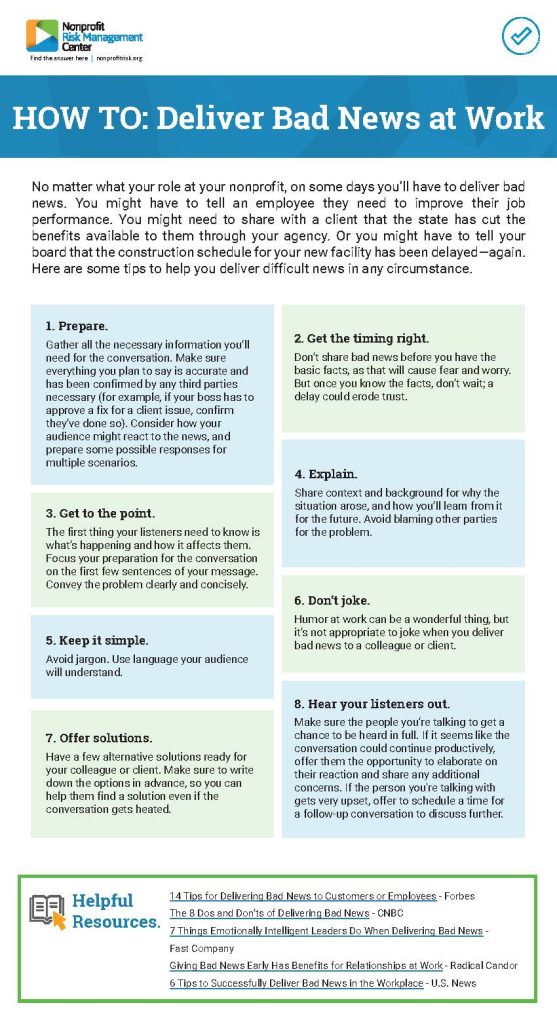No matter what your role at your nonprofit, on some days you’ll have to deliver bad news. You might have to tell an employee they need to improve their job performance. You might need to share with a client that the state has cut the benefits available to them through your agency. Or you might have to tell your board that the construction schedule for your new facility has been delayed—again. Here are some tips to help you deliver difficult news in any circumstance.

1. Prepare.
Gather all the necessary information you’ll need for the conversation. Make sure everything you plan to say is accurate and has been confirmed by any third parties necessary (for example, if your boss has to approve a fix for a client issue, confirm they’ve done so.) Consider how your audience might react to the news, and prepare some possible responses for multiple scenarios.
2. Get the timing right.
Don’t share bad news before you have the basic facts, as that will cause fear and worry. But once you know the facts, don’t wait; a delay could erode trust.
3. Get to the point.
The first thing your listeners need to know is what’s happening and how it affects them. Focus your preparation for the conversation on the first few sentences of your message. Convey the problem clearly and concisely.
4. Explain.
Share context and background for why the situation arose, and how you’ll learn from it for the future. Avoid blaming other parties for the problem.
5. Keep it simple.
Avoid jargon. Use language your audience will understand.
6. Don’t joke.
Humor at work can be a wonderful thing, but it’s not appropriate to joke when you deliver bad news to a colleague or client.
7. Offer solutions.
Have a few alternative solutions ready for your colleague or client. Make sure to write down the options in advance, so you can help them find a solution even if the conversation gets heated.
8. Hear your listeners out.
Make sure the people you’re talking to get a chance to be heard in full. If it seems like the conversation could continue productively, offer them the opportunity to elaborate on their reaction and share any additional concerns. If the person you’re talking with gets very upset, offer to schedule a time for a follow-up conversation to discuss further.
Resources
- 14 Tips for Delivering Bad News to Customers or Employees – Forbes
- The 8 Dos and Don’ts of Delivering Bad News – CNBC
- 7 Things Emotionally Intelligent Leaders Do When Delivering Bad News – Fast Company
- Giving Bad News Early Has Benefits for Relationships at Work – Radical Candor
- 6 Tips to Successfully Deliver Bad News in the Workplace – U.S. News